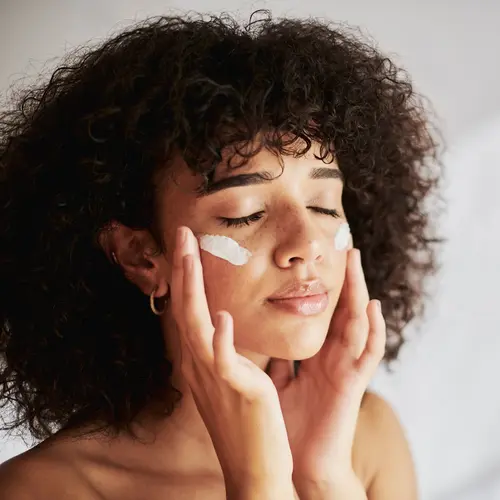Keeping your nails looking their polished best is simple. Good manicure habits will also protect the health of your nails.
Follow these seven steps and your manicure should last seven to 10 days.
1. Go Shorter.
Talons not only look dated -- they’re more likely to split, break, and may even become detached from the nail bed.
"The longer the nail is, the more it acts like a lever," says dermatology professor C. Ralph Daniel III, MD, of the University of Mississippi Medical Center. "Any kind of force can lift the nail plate upward and away from its bed."
A chic and modern length is a nail that extends ever so slightly beyond the tip of your finger.
2. Shape Them Up.
Slightly oval or rounded nails with the corners left square is the easiest shape to maintain, says Wendy Lewis, a beauty consultant and author of Beauty Secrets: The Complete Lowdown on Skin, Hair and Body Treatments.
Sculpt your nails with a fine-grade emery board. Look for one in your drugstore or beauty supply shop that has the grit marked (the higher the number, the finer the grit), and choose a grit of 280/320.
Or try a four-sided buffer, which has surfaces of varying grittiness for shaping, smoothing, buffing, and shining.
File gently in one direction. If you saw back and forth, you'll weaken the tips of your nails, and that can lead to shredding or peeling.
3. Prep Before Polish.
If you have vertical ridges on your nails, create a smooth surface by applying a ridge-filling strengthener. Or, buff away the ridges with the fine side of a four-sided buffer.
Use restraint. If you buff too aggressively, you'll make the problem worse by thinning out the nail plate. "A good rule of thumb is if you feel heat or friction, back off," says Julie Serquinia, owner of The Paint Shop Beverly Hills nail salon in Beverly Hills, Calif.
Before you apply polish, swab nails with alcohol to remove any oily residue from creams or lotions. Any trace of oil will cause the polish to lift and peel, says Nancy Reagan, owner of Bella Reina Spa in Delray Beach, Fla.
4. Skip the Soak.
Dunking your fingertips into a little bowl of liquid is a standard step in most salon manicures. But it's actually a bad idea.
Your nail beds expand when you submerge them in water, and then shrink back when they dry, causing the new coat of polish to loosen. The purpose of the water soak is to assist in softening the cuticle, but a better idea is to use a cuticle softener, Reagan says. "These do a superb job of softening the cuticle so you don't need water," she says.
5. Moisturize Your Nails Nightly.
Dehydrated nails are more likely to break and split, while moisture-starved cuticles can become ragged, leading to those unsightly pieces of dead skin called hangnails.
The most efficient way to nourish parched nail beds and cuticles is with nightly use of a cuticle oil, says Jill Weinstein, MD, an instructor of clinical dermatology at Northwestern University Feinberg School of Medicine. Keep a tube on your bedside table, suggests Weinstein, and apply a couple of drops around each nail, massaging into the cuticle. This simple step will help your manicure last longer, since brittle nails chip more easily.
6. Use a Base Coat.
Applying a base coat will help nail polish stick and wear longer.
When you move on to lacquer, keep your brush strokes to a minimum and your coats to two. The fewer strokes you use to cover your nail, the less chance of streaks, Lewis says. You'll also avoid creating the air pockets and bubbles that can be caused by thick layers of polish, Reagan says.
7. Add a Topcoat.
Defend against chips by applying polish and topcoat across the top edge of your nails. This is called a "seal."
Maintain the manicure by putting a new topcoat on the entire nail every other day.
Still, even with the best defense, chips happen. Fix chips by soaking a cotton swab in nail-polish remover and dabbing it on and around the scratch or nick to even out the surface, Serquinia says. Apply a thin coat of nail polish and follow with a topcoat.
If you get a manicure in a salon, take steps to avoid getting an infection. Bring your own instruments or choose a salon that uses a device called an autoclave to sanitize instruments between clients. The autoclave does a better job of killing infectious germs than the green-blue disinfectant that you see in jars on your manicurist's station, says dermatologist Jeanie Leddon, MD, PhD, of Lafayette, Colo.
Also, don’t trim your cuticles. Cuticles seal the gap between the nail and skin. Remove or damage this protective seal and germs can infiltrate, potentially casing infections. Instead, keep cuticles tidy by using a cuticle oil and gently pushing them back with a cotton swab.


